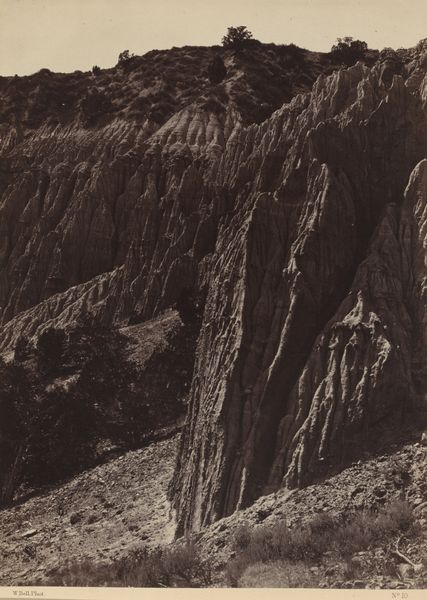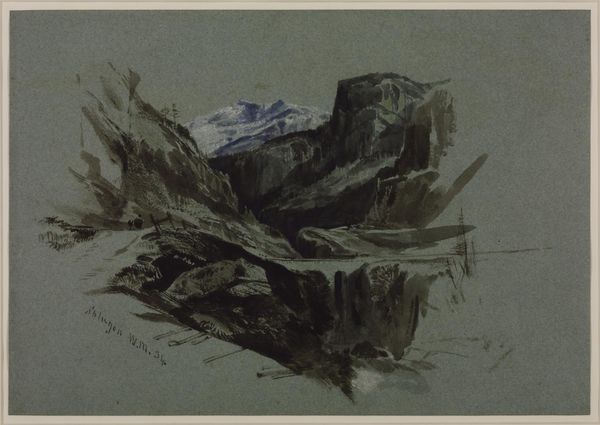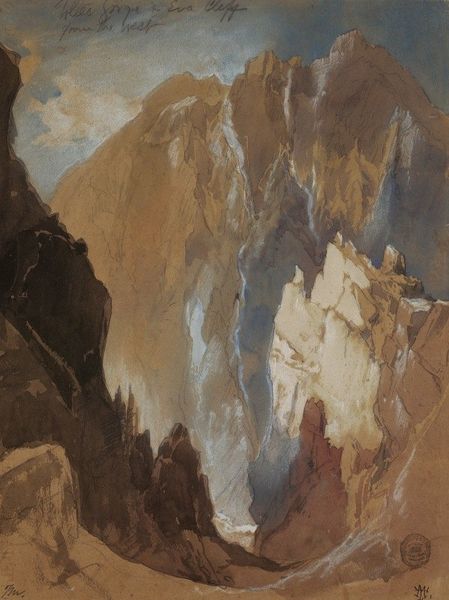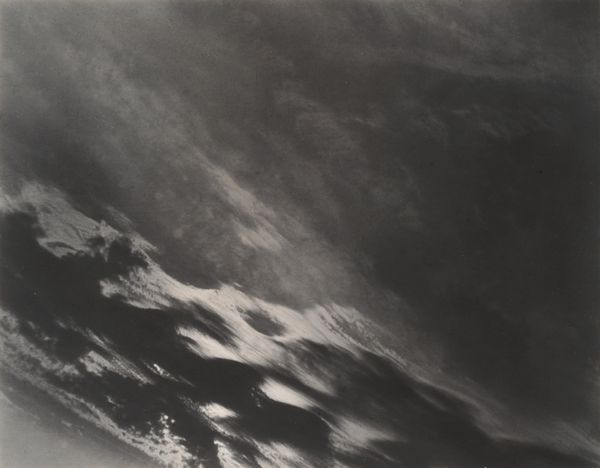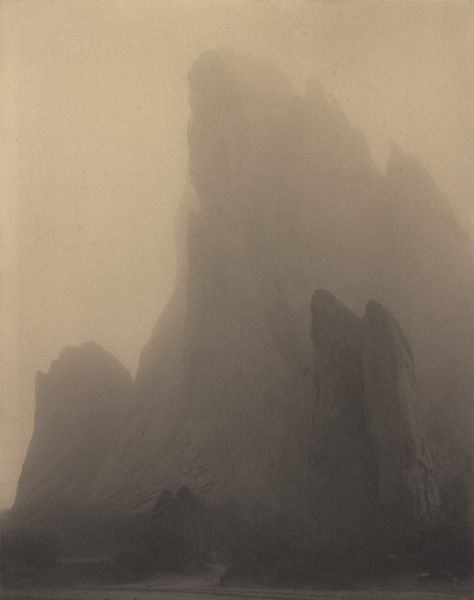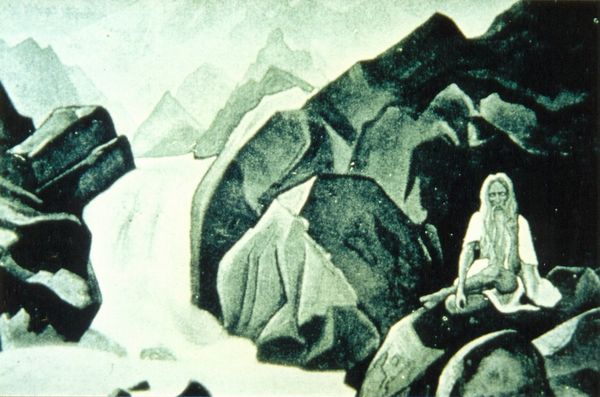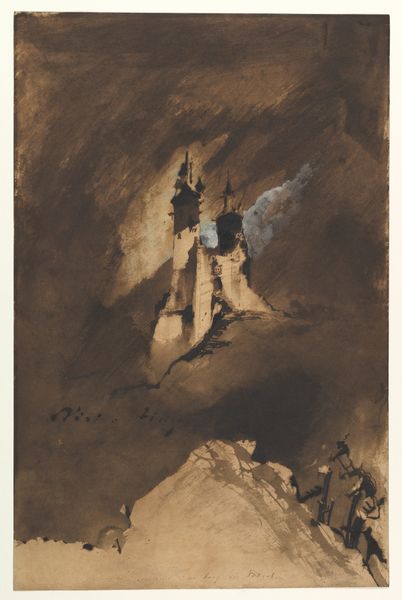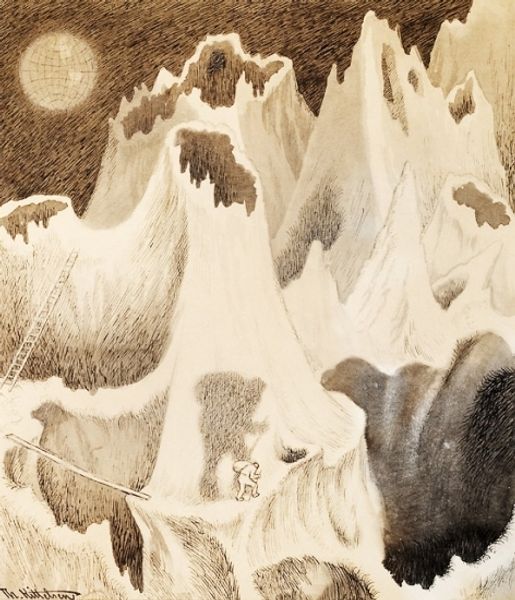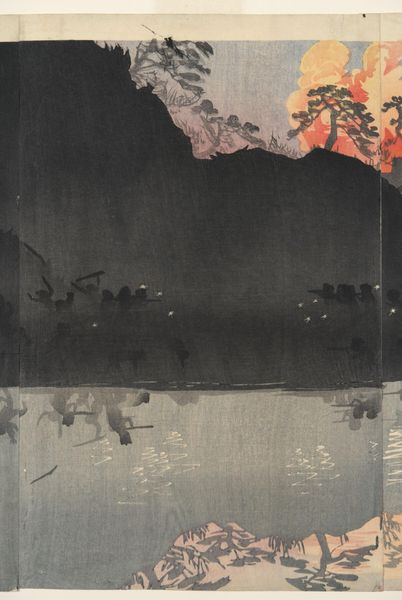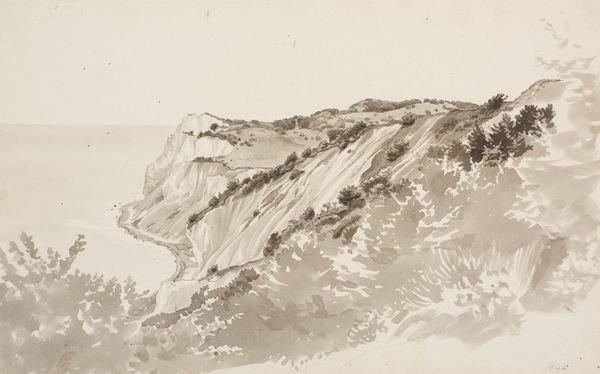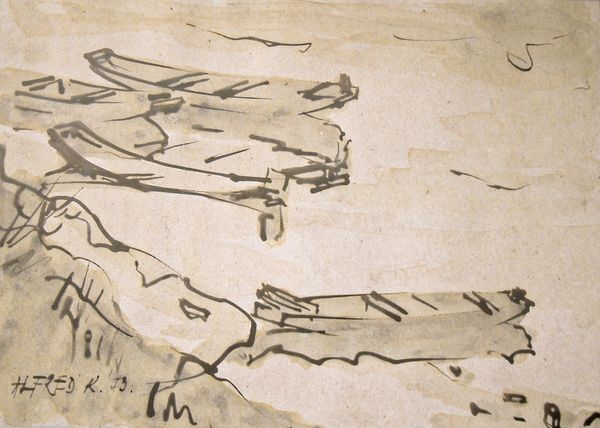
Waterfall after Ma Yuan late 18th - early 19th century
0:00
0:00
drawing, ink-on-paper, hanging-scroll, ink, mural
#
drawing
#
asian-art
#
landscape
#
ink-on-paper
#
hanging-scroll
#
ink
#
mural
Dimensions: 53 3/4 × 11 5/16 in. (136.53 × 28.73 cm) (image)78 5/16 × 15 13/16 in. (198.91 × 40.16 cm) (mount, without roller)
Copyright: Public Domain
Curator: What a dramatic composition. At first glance, this hanging scroll elicits a sense of awe and power. Editor: This is "Waterfall after Ma Yuan" by Ki Baitei. It’s rendered in ink on paper and dates back to the late 18th or early 19th century. You can find it here at the Minneapolis Institute of Art. What are your initial thoughts about its significance? Curator: The dynamic composition is striking. The use of empty space, or lack thereof, emphasizes the overwhelming force of nature. Light seems to cascade with the water. How do you read the artist's handling of ink, line, and form? Editor: Well, the density of the ink is quite masterful, especially given the period during which Ki Baitei worked. It conveys depth and weight, almost mimicking the sheer volume of the water. The blurred forms give a sense of dynamism. But looking closer, the "after Ma Yuan" title piques my interest. Ma Yuan was a pivotal figure in landscape painting. This piece begs the question: What is Baitei saying by consciously echoing a predecessor? Curator: The homage is interesting because landscape paintings have often been commissioned for elites to celebrate natural phenomenon, but by replicating the style from the revered master, it democratizes the imagery, no? Is Baitei reflecting upon the changing societal value of the landscape genre during this period? It would need more consideration... Editor: Perhaps, and in any event, one cannot ignore its undeniable visual appeal. From a purely formal perspective, the controlled chaos, the interplay of textures, it's all quite remarkable. The eye is pulled downwards, mimicking the water's trajectory. Ultimately, Ki Baitei’s rendition inspires thought about this work and reflection on earlier sources, such as Ma Yuan. Curator: True. Reflecting on Ki Baitei’s work has reinforced my fascination with art’s social contexts and continuing reinterpretation over time. Editor: Agreed. Thinking about the artistic elements and composition brings me a deeper appreciation for the enduring influence of formal innovation and technique on painting and culture more widely.
Comments
No comments
Be the first to comment and join the conversation on the ultimate creative platform.
